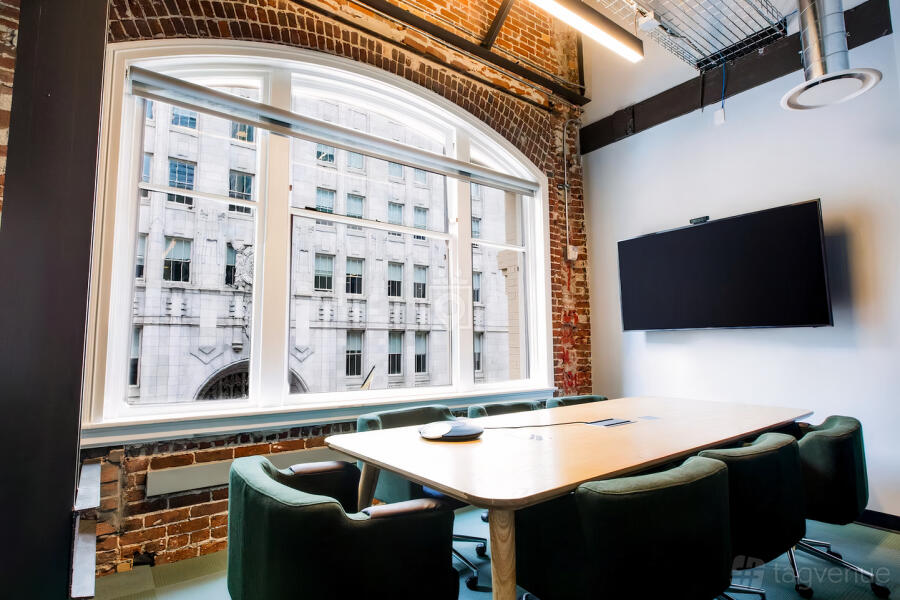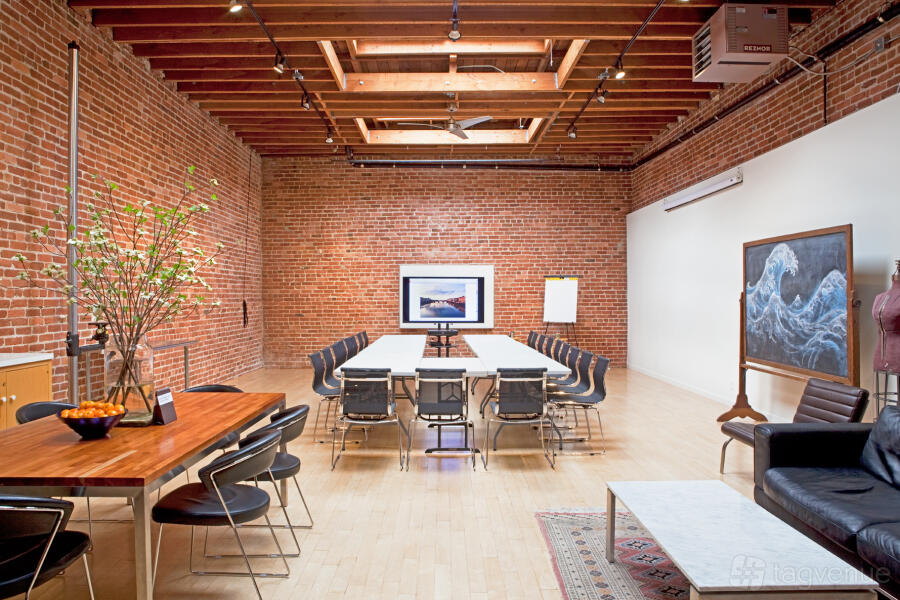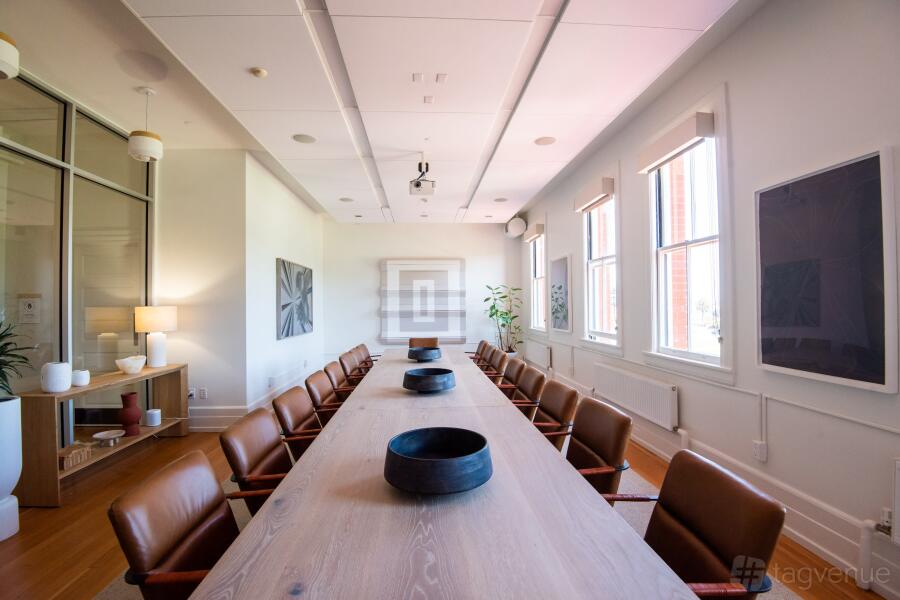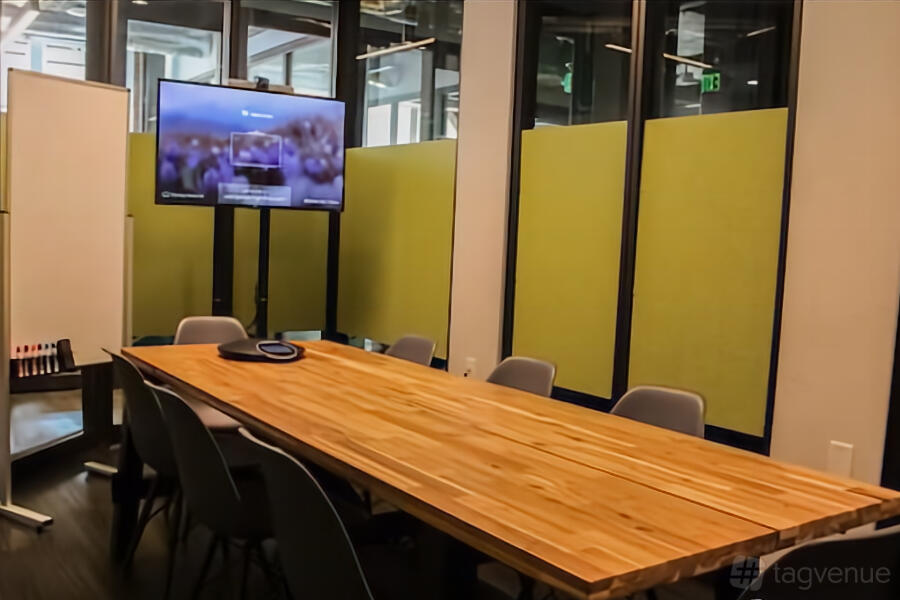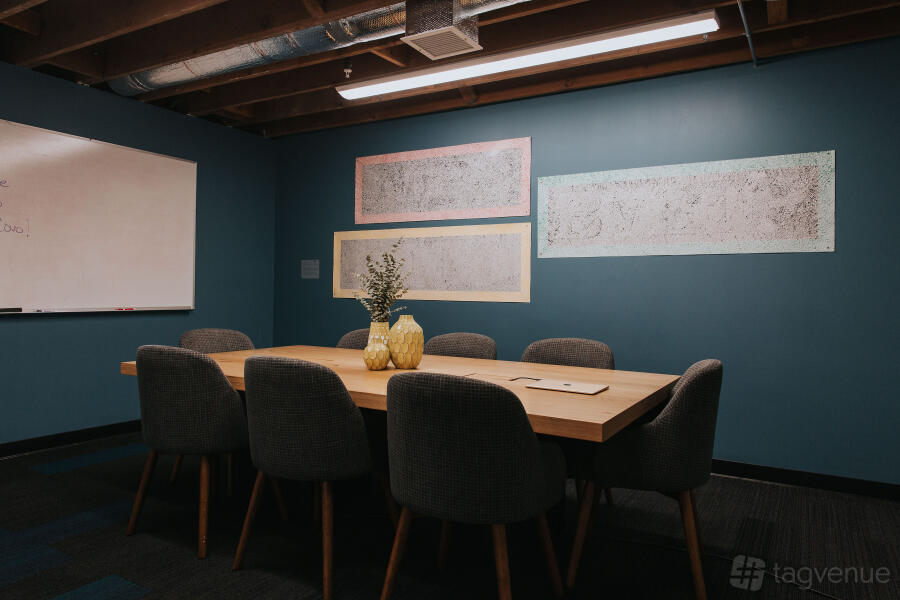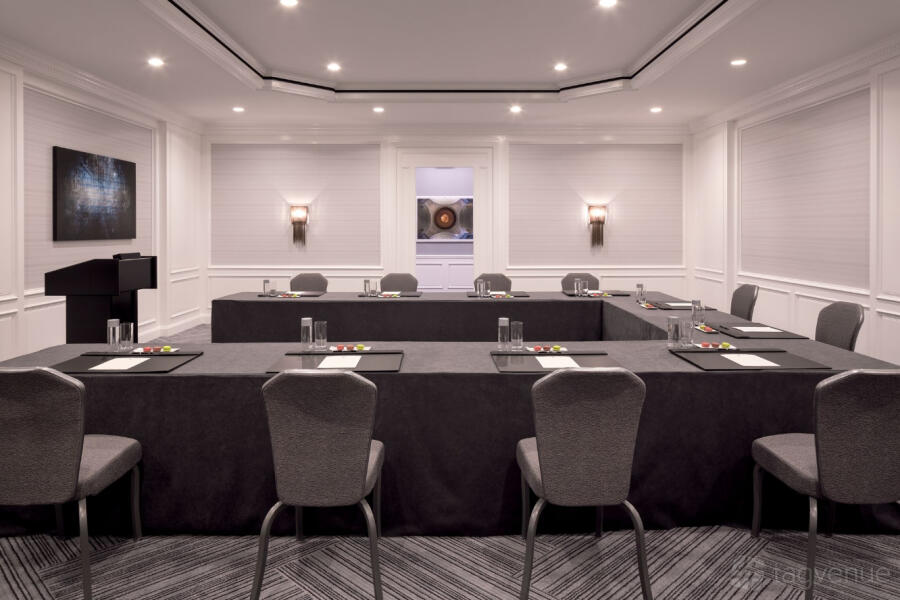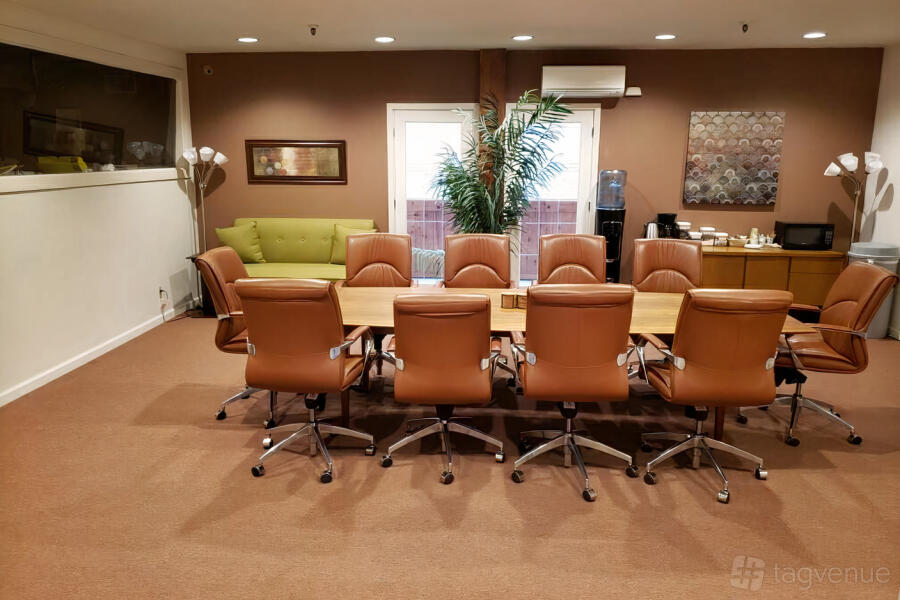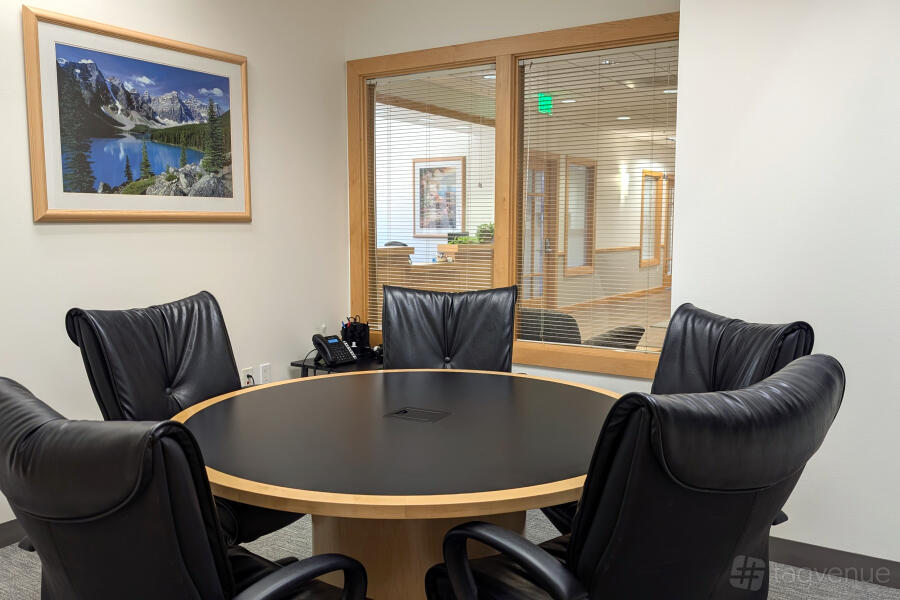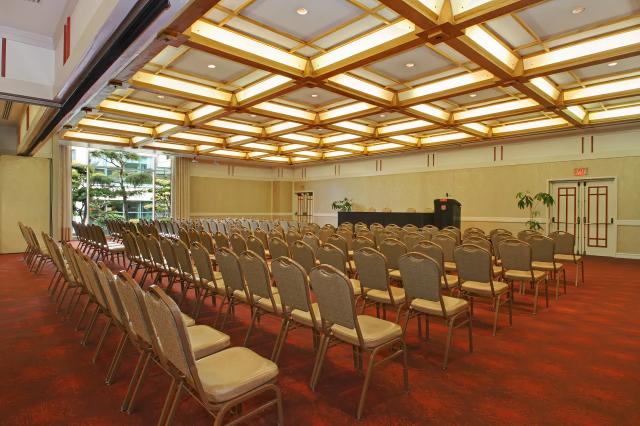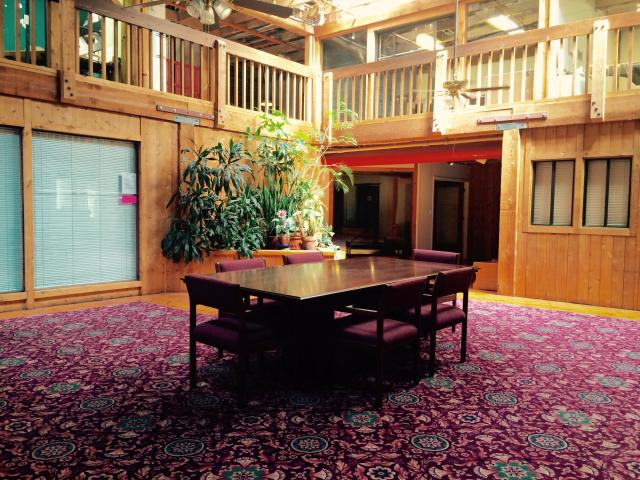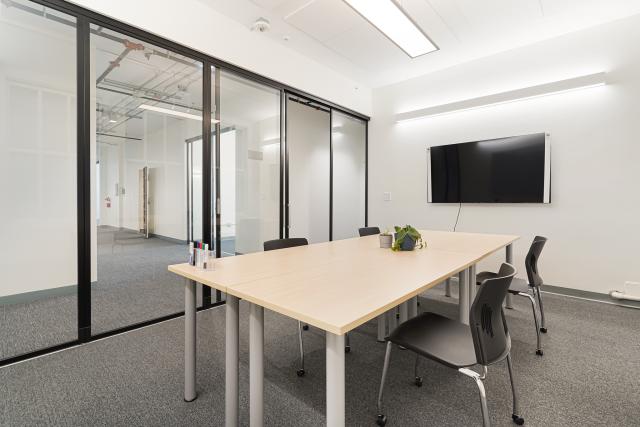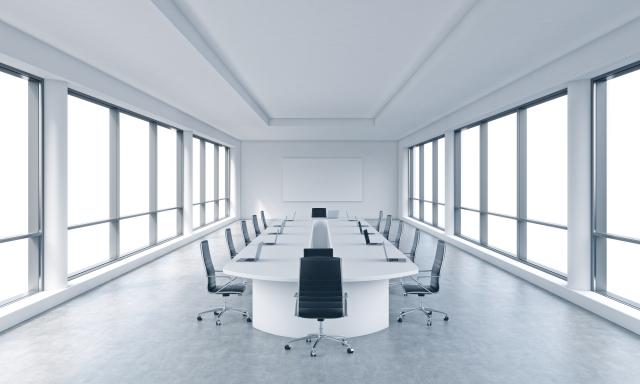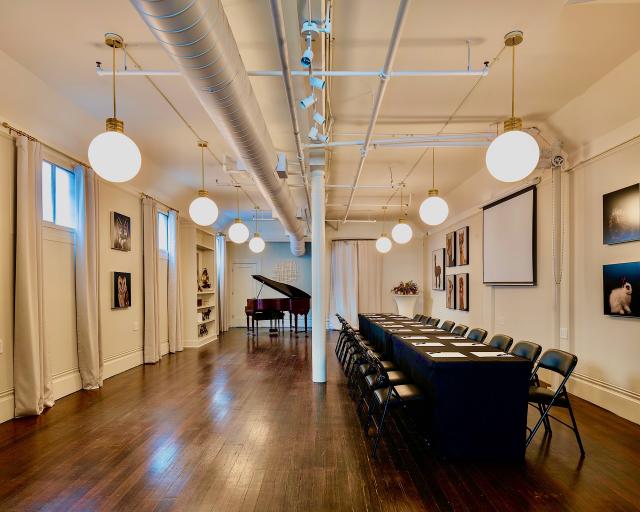Top Meeting Spaces in San Francisco, CA
In San Francisco to do business? Maybe you’re organizing a press conference or looking for a co-working space? The city is filled with fabulous meeting rooms – from high-end locations to affordable alternatives, there’s something for everyone. Whether you’re doing a presentation, brainstorming a new game plan for your startup or hosting a networking event, Tagvenue is sure to have just the right room! Have a look at our curated selection of meeting spaces for rent in San Francisco and book yours in no time.
-
from $100
hire fee / per hourBook nowCity Room
14 guestsHotel AbriUnion Square, San Francisco, CAYYuka T.
“The desks were set up with notepads as well, which was extremely helpful for our meeting.” -
from $110
hire fee / per hourBook nowMeeting Room 4A (8 Person)
8 guestsWerqwise San FranciscoSouth of Market (SOMA), San Francisco, CARRyo N.
“I couldn't attend thins meeting” -
from $150
hire fee / per hourBook nowRenovated Warehouse
24 guestsSintak StudioMission District, San Francisco, CA#Supervenue
CColin S.
“Everything you need for a meeting in clean and well equipped space. Hosts were very responsive and helpful.” -
from $35
hire fee / per hourBook nowConference Room
10 guestsCo-Mission SpaceMission District, San Francisco, CAPPhil K.
“It was easy to book. The location & venue met my expectations. Adam was very friendly and accommodating.” -
from $220
hire fee / per hourBook nowBoardroom
18 guestsEdge & Node House of Web3Presidio, San Francisco, CAPresidio Boardroom is ideal for professional gatherings such as meetings, workshops, and client presentations. The minimalist decor in neutral tones, promotes focus and clarity during sessions. -
from $50
hire fee / per hourBook nowDahlia
6 guestsTrellisSouth of Market (SOMA), San Francisco, CA#Supervenue
JJessica D.
“We loved the space as a whole, it was really nice, quiet, and had a lot of great amenities to it.” -
from $120
hire fee / per hourBook nowMeeting Room 5C (12 Person)
12 guestsWerqwise San FranciscoSouth of Market (SOMA), San Francisco, CAAre you looking for a smart space to host your next meeting? Meetings can be hectic, confusing, and time-consuming. A private office to accommodate your team. -
from $200
hire fee / per hourBook nowDiplomat Room
8 guestsThe Ritz-Carlton San FranciscoChinatown, San Francisco, CAThe Diplomat's Room windows provide natural light for your brainstorming sessions. It is ideally suited to host corporate galas, board meetings, product launches, press junkets, and more. -
from $75
hire fee / per hourBook nowIvy
8 guestsTrellisSouth of Market (SOMA), San Francisco, CA#Supervenue
This space is great for small meetings and creative sessions, as well as conferences. With the high-speed wifi and telecommunication capabilities, this space is also a great place for Zoom meetings in a professional setting. -
from $300
hire fee / per hourBook nowConsulate Room
24 guestsThe Ritz-Carlton San FranciscoChinatown, San Francisco, CAWith a u-shaped setup, the Consulate Room can host a meeting for up to 24 people in a sleek, modern setting. It is ideally suited to host corporate galas, board meetings, product launches, press junkets, and more. -
from $95
hire fee / per hourBook nowSuite 322
12 guests350 TownsendSouth of Market (SOMA), San Francisco, CAYou will love the vibe here at 350 Townsend! This space is great for a board meetings, team building, large enough with 650 sq ft, coffee & tea, 2 whiteboards, monitor, printer, 10 chairs around table with extras chairs in -
from $50
hire fee / per hourBook nowMeeting Room
5 guestsIntelligent Office Financial DistrictDowntown San Francisco, CAThe meeting room can comfortably seat up to 5 people. Equipment includes free wired and Wi-Fi Internet as well as a whiteboard and TV. In the kitchen, you'll find self-serviced coffee, tea, and water.
- 1
- 2
- 3
- ...
- 5
Popular filters
Capacity
Budget
Area type
Venue type
Catering and drinks
Accessibility features

FAQs about Top Meeting Spaces in San Francisco, CA
In San Francisco, prices of meeting spaces average around $175 hire fee per hour. The exact costs depend on the room size, audiovisual equipment (such as projectors or microphones), or high-speed Wi-Fi. Additional services, such as catering or on-site coordinators, may cost extra. Flexible configurations for presentations, workshops, or networking, along with amenities such as parking or dedicated breakout rooms, will also affect the price. See usual price ranges in San Francisco, based on Tagvenue data, as of December 2025:
| From $100 | to $300 | hire fee per hour |
| From $1200 | to $4000 | minimum spend per event |
| From $900 | to $4000 | hire fee per event |
Based on the popularity and user ratings on Tagvenue (updated December 2025), the best options include:
-
Renovated Warehouse at Sintak Studio in Mission District - rated 5/5
Our user said: ‘Everything you need for a meeting in clean and well equipped space.’ -
City Room at Hotel Abri in Union Square - rated 4.9/5
Our user said: ‘The location was very convenient, and the venue was beautifully organized.’ -
Meeting Room 4A (8 Person) at Werqwise San Francisco in South of Market (SOMA) - rated 4.8/5
Our user said: ‘I couldn't attend thins meeting...’
You'll find meeting spaces in various sizes, from smaller spots to larger venues; keep in mind that the type of space and your chosen layout will affect the capacity! Below you can see the typical venue sizes in San Francisco, together with the standard prices in each size range, based on Tagvenue data (December 2025):
| Small | up to 10 guests | prices average $95 hire fee per hour |
| Medium | between 25 and 60 guests | prices average $175 hire fee per hour |
| Large | over 75 guests | prices average $489 hire fee per hour |
These are the venues within 0.3 mi from central San Francisco, available to book on Tagvenue:
-
Meeting Room at Intelligent Office Financial District
on 100 Pine Street Suite 1250 - 0.1 mi from center.
Venue said: Intelligent Office San Francisco provides a new, smarter, and more cost-effective way of working and doing business. Thousands of our clients have grown their business and reaped benefits, including higher sales, better customer... -
Conference Room at The Newhall Nest
on 260 California Street - 0.2 mi from center.
Venue said: Our conference room combines traditional luxury with modern corporate amenities. The room seats up to 14 guests and is equipped with a projector and screen, Sonos sound system, luxurious marble conference table, and conference/speaker... -
Mirus Art Bar & Cafe at Zen Compound
on 540 Howard Street - 0.3 mi from center.
Venue said: Available individually or combined, Temple’s world-class Events Team can help you craft the perfect setup for your activation, conference, meeting, party or any type of event.
Opening hours will vary from space to space, so be sure to always check with your venue manager. A typical business day lasts 8 hours, starting at 9 a.m. and ending at 5 p.m. Some venues open an hour or half an hour earlier, that is at 8:00 or 8:30 a.m., and close half an hour later, at 5:30 p.m. Depending on your needs, you can even find meeting spaces that stay open well into the evening hours. The majority of venues charge hourly rates, so you can book the space for exactly how long you need. Of course, it’s also possible to rent a space for an entire day.
Many fabulous venues with meeting spaces are centered around the areas of The Financial District and Union Square, with their upscale hotels and fancy conference centers. Nearby Embarcadero and SoMa are also worth checking out. If you’re looking for something a little farther from downtown, try places such as the quiet Richmond District.
Your Guide to Renting Meeting Spaces in San Francisco, CA
Looking to rent a meeting room in a high-rise near Montgomery Street, a creative loft in Showplace Square, or a sleek conference space in Union Square? Across the city, you’ll find many well-equipped venues to match your meeting’s tone, regardless of if you're pitching to investors, holding a team offsite, or planning a strategy session.
What Types of Meeting Spaces Can I Find in San Francisco?
Choosing the right venue depends on what kind of meeting you’re planning. From formal boardrooms to flexible creative studios, the city offers spaces for every setup:
- Conference Rooms – For corporate meetings with full tech support, AMA’s SF Executive Conference Center (SoMa) is a reliable pick with strong AV capabilities and flexible room sizes.
- Hotel Meeting Spaces – If you need a polished venue for a client presentation or executive meeting, try Hotel Abri (Union Square) for a central location and a well-appointed boardroom setup.
- Private Function Rooms – Combine business and dining at Naked Kitchen (Mission District)—a stylish option if you're hosting a lunch meeting or a creative session over food.
- Co-working Spaces – If you want something more flexible or cost-effective, venues like Werqwise San Francisco (SoMa) offer private meeting rooms with strong amenities inside a shared workspace.
- Cafes or Informal Settings – For relaxed meetings or one-on-one catchups, a venue like HeartLab (Mission District) offers a calm, design-forward space that works well for creative discussions or casual team check-ins.
Booking Tips for San Francisco Meeting Spaces
Booking the right venue means thinking through logistics before you hit “reserve.” Here are a few things to keep in mind:
- Set a Budget – Use This crucial piece of information will help you narrow your search to meeting spaces that fit your price range. You can use our filter to easily find the one thatb fits. For example, Co-Mission Space (Mission District) starts at $35/hr and is perfect for startups or smaller teams looking to save without losing comfort.
- Pick the Right Size – Ensure that there’s enough room to fit everyone comfortably, but don’t book a meeting space that’s too big. This will not only help you avoid unnecessary costs, but also give the meeting the perfect energy If you’re hosting a mid-size group, Office 440 (SoMa) offers seating for 32 with enough space to spread out and collaborate.
- Choose a Convenient Location – It should be convenient to all, or at least the majority of, attendees. Make sure it’s easily accessible by car and/or public transport. For a central spot near transit, Intelligent Office Financial District is just a short walk from BART and is great for meetings with out-of-town attendees.
- Match the Mood – Factors such as design, decor and lighting have a large impact on the overall ambiance of the space. If you're hosting a meeting that is different from the norms, spaces like Creative SOMA Loft (Showplace Square) brings a bright, loft-style setup perfect for ideation and casual teamwork.
- Check Equipment & Services – Use the filter to find venues with the facilities you need. Screens, projectors, whiteboards – make a list of everything that you will need to run your meeting smoothly and keep it on hand while browsing venues. Spaces like Edge & Node House of Web3 (Presidio) are fully equipped for hybrid setups and digital collaboration.
Meeting Planning Tips
- Start with a clear purpose – If it’s solving a problem or building team alignment, keep the purpose in mind throughout the duration of the meeting and make sure you’re progressing in the right direction.
- Send an agenda – Having an agenda and making sure the meeting progresses towards its set goal is a way of showing respect for everyone’s time.
- Prioritize the comfort of your participants – A comfortable, well-lit space (like Rae Studios in Union Square) helps people stay focused and engaged. Make space for other people to contribute to the meeting, e.g. ask questions and go around the room to give each person the chance to speak up. Remember to acknowledge all contributions. Watch out for signs of fatigue among your audience and schedule breaks that will enable them to refuel.
- Plan for hybrid – If you are hosting a remote-friendly meeting, choose a venue with reliable internet and proper AV gear. Remember to take care of good sound quality, so that it’s easy for everyone to follow the discussion.
- Add catering if needed – For all-day meetings, check whether the venue allows outside food or offers on-site service. Places like Culinary Artistas (Russian Hill) even double as food-friendly event spaces.
We hope that by now you’re feeling inspired and ready to choose the ideal San Francisco space for your meeting. For more in-depth tips on how to run a successful meeting, read our blog post. And if you’re still looking for more info on SF meeting spaces and want to dig even deeper, check out the most frequently asked questions.
Great Spots for Team Building Sessions
Look for venues that are flexible, fun, and a little out of the ordinary. For example, 7th West (Accorn Industrial) has huge space and skyline views, perfect for group activities or workshops.
Anchor (Van Ness) is another good pick for interactive sessions with enough space to move around, break into smaller groups, and play games.
And if you want something more cozy and creative, HeartLab (Mission District) brings artsy energy into the mix. It is great for getting people out of their comfort zones (in a good way).
If you want to add food or drinks, go with something like Culinary Artistas (Russian Hill) where you can actually combine a workshop with a cooking activity. Your team gets to bond and eat—can’t go wrong with that.
Need a Meeting Space in San Francisco Last Minute?
Many venues on Tagvenue offer real-time availability and can be booked same-day or just a few hours ahead.
Trellis (SoMa) has multiple small rooms perfect for quick client check-ins or remote interviews.
Need something more polished for a last-minute board meeting? 350 Townsend (SoMa) offers sleek spaces that are ready to go, with tech already set up.
For a central but still affordable spot, Dynamico Space (Union Square) is a solid backup plan. It is convenient, clean, and super easy to book.
Remember to always check the venue’s cancellation policy when you’re booking last minute. Some spaces are flexible if your plans change again.
People also search for
Meeting Spaces in nearby suburbs
Meeting Spaces in California
Meeting Spaces in other cities
Page last updated in December 2025
To provide you with relevant information, our pages are refreshed using an algorithm that aggregates real-time data, including bookings, reviews, and venue updates.

